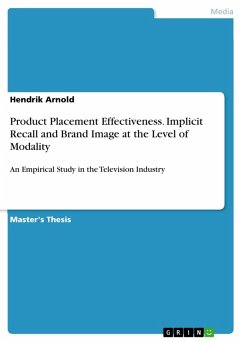Master's Thesis from the year 2004 in the subject Communications - Public Relations, Advertising, Marketing, Social Media, grade: 97%, University of Geneva (HEC (Haute Etudes Commerciales)), language: English, abstract: This study analyses the reasons and how to integrate successfully the Internet in the brand strategy of a small enterprise in order to maximise the effects resulting thereof as an effective brand-building tool. To understand clearly the issues of the Internet integration in a small enterprise, the study considers a theoretical approach and a practical case of a small business called Bambino Mio Ltd. This firm is producing cotton nappies and distributing them in the UK and Spain (and soon in Europe). Its channels of distribution are, on the one hand, classic with distributors and on the other hand through Internet, which provides the user detailed product information and a limited possibility to purchase online. Before starting the analysis of the different marketing aspects related to the Internet, the study exposes the key brand elements being the source of a successful migration of the Small and Medium Enterprise's (SME) offline brand to the Web. In addition, it appears that the notion of small and medium enterprise is not only a moderator in term of Internet and marketing opportunity, but implies a different approach of the problem due to the particular constraints related to the sector of SMEs. This kind of organisation has to proceed primarily through an evaluation of its situation in term of market position (level of competition, life-stage of the products and of the firm) and then define the profile of its target market in terms of geographic, demographic, psychographic and behaviouristic segmentation. The results of this first part will help the 'manager-owner' to define his brand identity, fundamental notion about the products, which will be used to build the Internet's branding strategy to have a consistent and convenient message. Then the branding section will explain how to define the 6 facets of the brand identity prism and the tangible aspects of the brand. The study considers then the reasons encouraging SMEs to integrate the Internet. First of all, in connection with the previous part, the influences of the Web on strategic branding is analysed partly in order to identify the consequences of the migration of the brand from the tangible world to the virtual one. Actually this transformation implies several kinds of gains such as cost reductions, ability for SMEs to compete at the same level as large companies and improve the communication (one-to-one and many-to-many models) amongst others. [...]
Dieser Download kann aus rechtlichen Gründen nur mit Rechnungsadresse in A, B, BG, CY, CZ, D, DK, EW, E, FIN, F, GR, HR, H, IRL, I, LT, L, LR, M, NL, PL, P, R, S, SLO, SK ausgeliefert werden.









